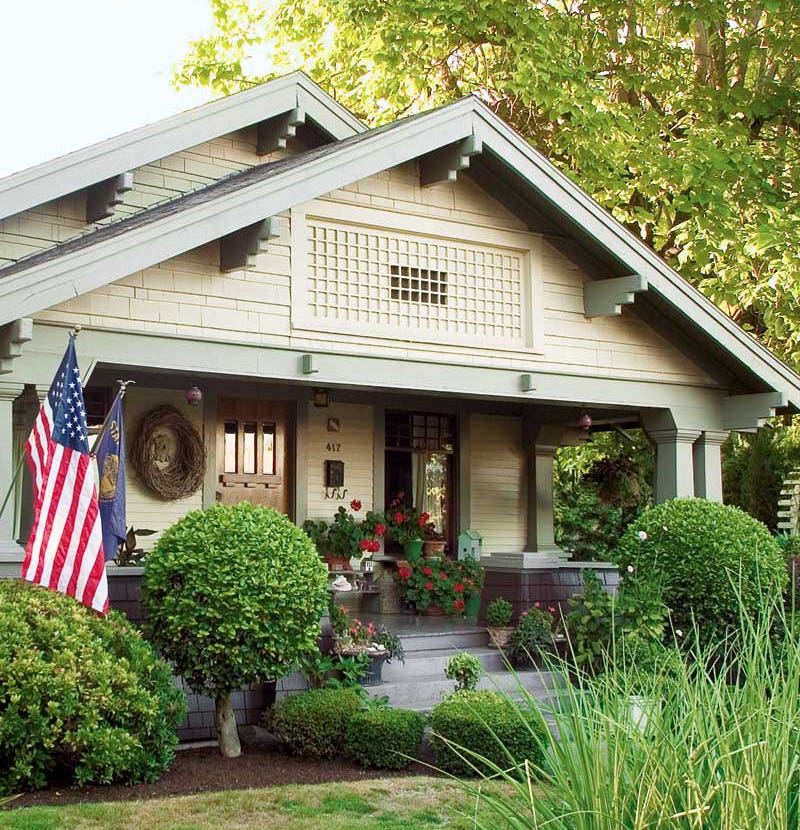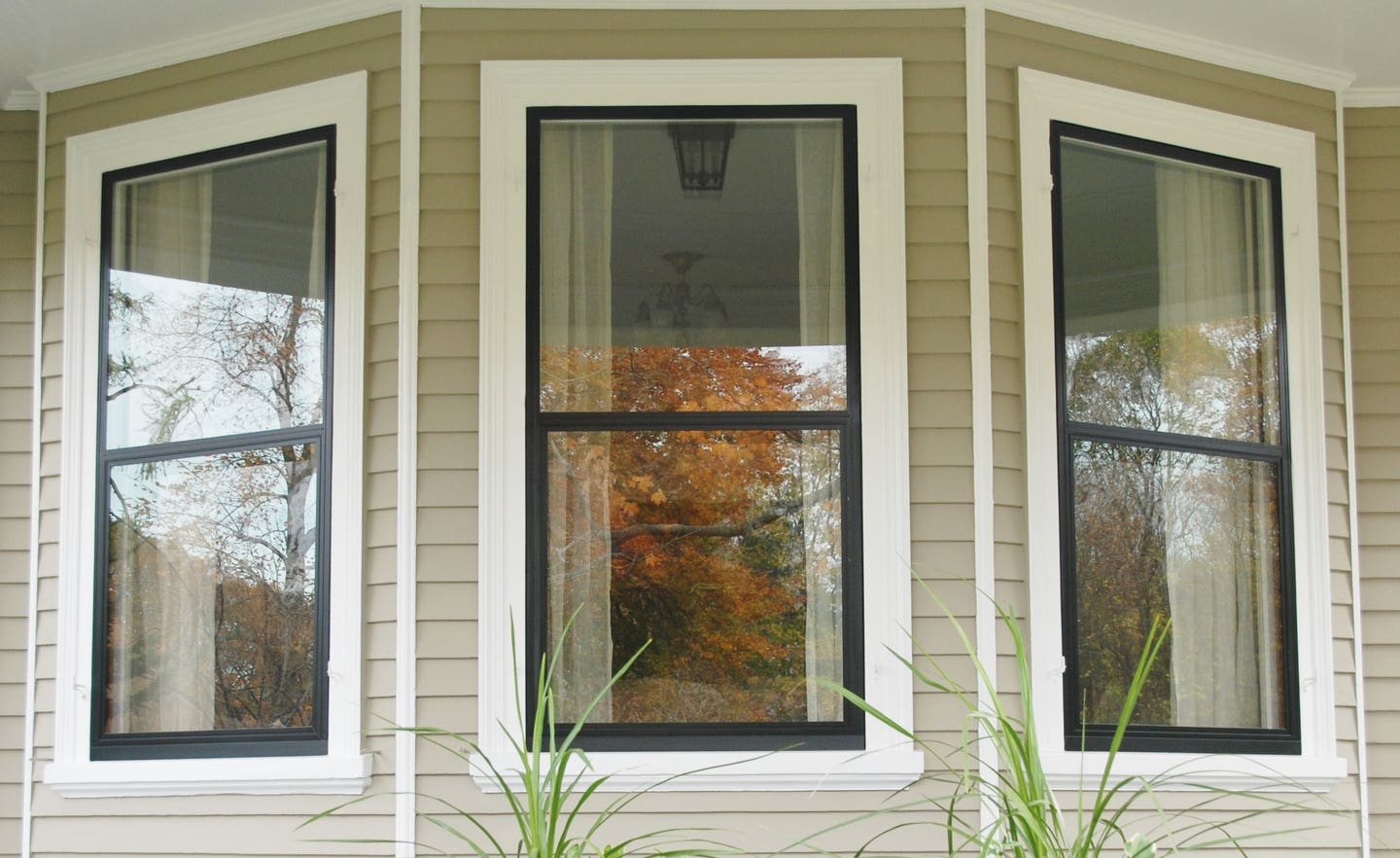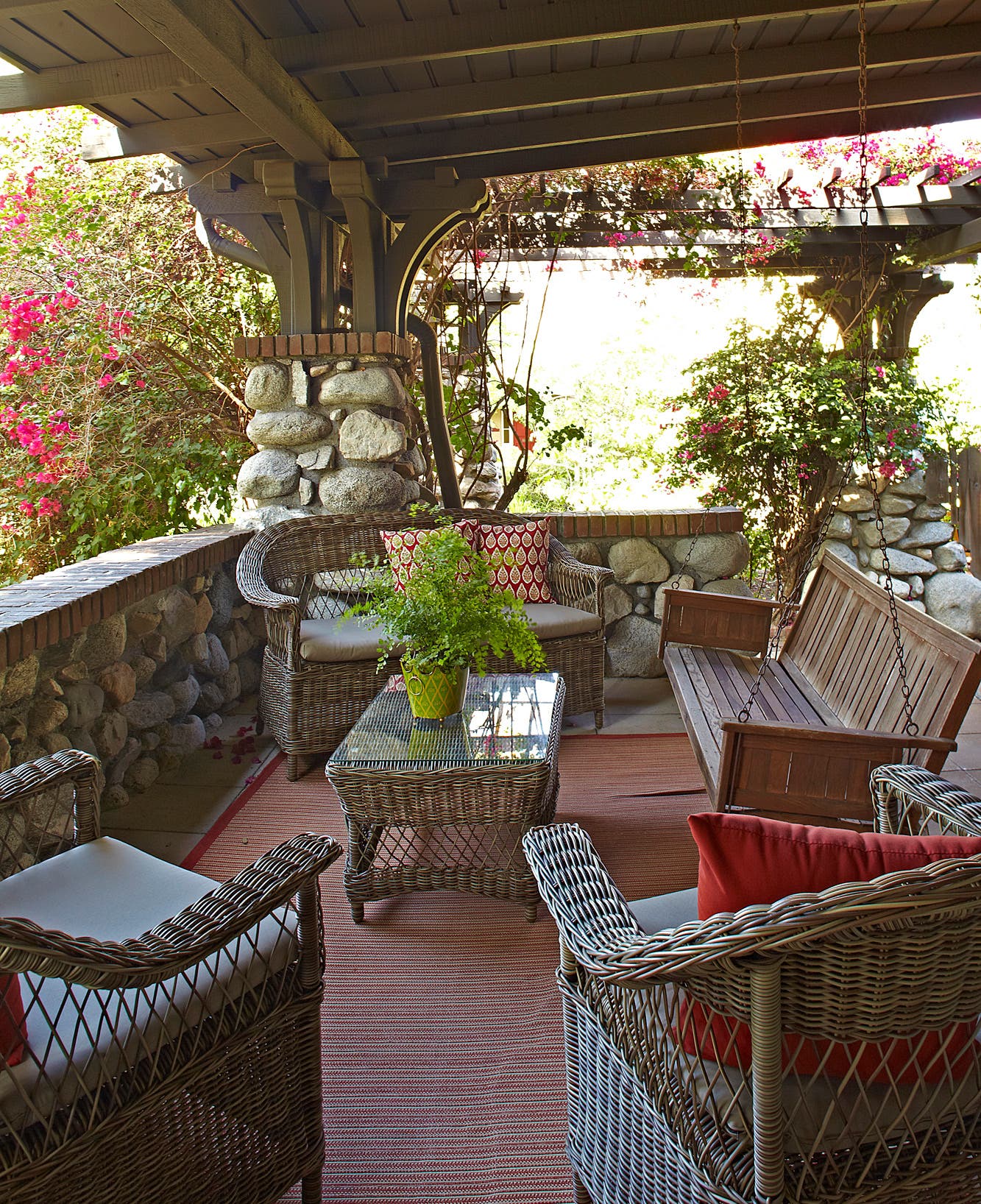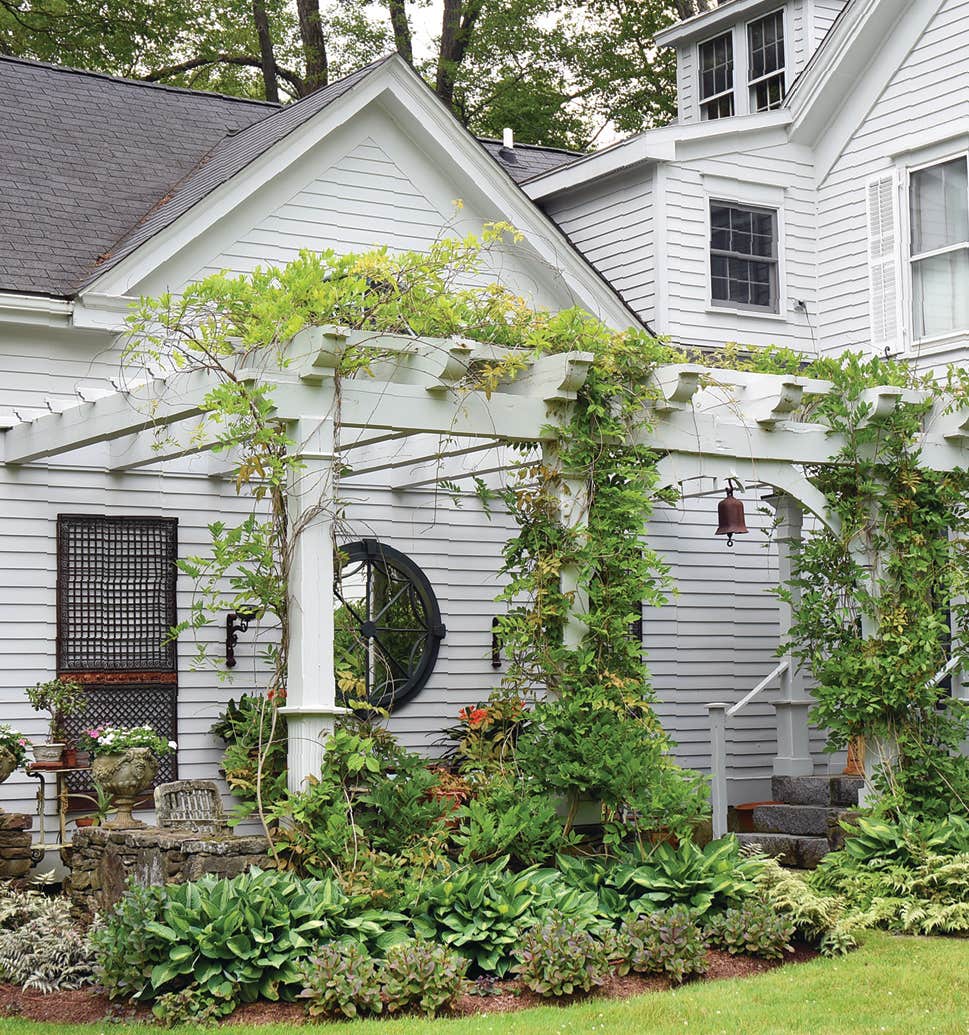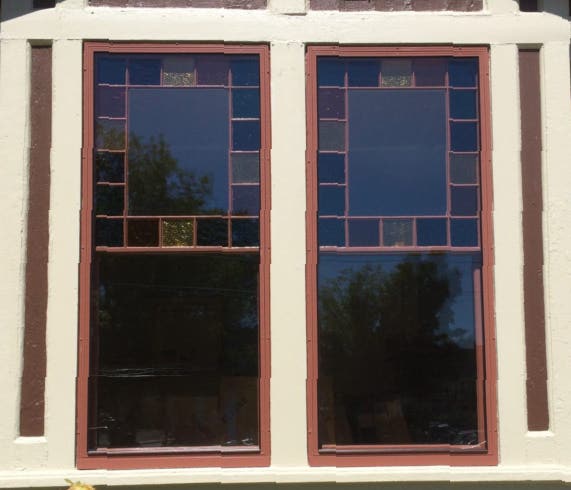No Stone Left Unturned
Perched above an abandoned granite quarry, this garden has rock sculptures and perennials, vegetables and a place to meditate.
The architecture of this garden—with “rooms” devoted to flowers, birds, water features, vegetables, and leisure—was created from the granite quarried here a century and more ago. Rockport, the northern tip of Cape Ann in Massachusetts, was a center of the granite industry. Dave and Nan Araneo live in an artsy 1970s house that was built within the massive walls of what was originally an ox barn dating to 1830. (Oxen hauled blocks of granite from the quarry to schooners at the docks.)
“Digging here is like an archaeological dig,” Dave says. Nan explains that only a percentage of what was quarried was sold, so the yard has “treasure troves, piles and piles of cut and natural stone” left over from the quarry.
The 1970s owner, an antiques dealer, also built a Japanese teahouse; it’s used as a guest room. When the Araneos arrived, they found a dramatic courtyard in the space between the granite walls and the house. The couple added a kitchen wing and built an adjoining granite patio from huge, flat stones that had been the barn floor.
The yard was wild and overgrown. “We are both passionate gardeners,” Nan says, “so it was exciting when we got to know what we had to work with.” Dave and Nan created a spectacular vegetable garden surrounded by granite walls. They grow bamboo, then use the stalks to weave trellises and teepees for cucumbers, green beans, raspberries, and other vines. After vacationing in Italy, they were inspired to install a mosaic walk composed of granite pieces and shards collected during demolitions.
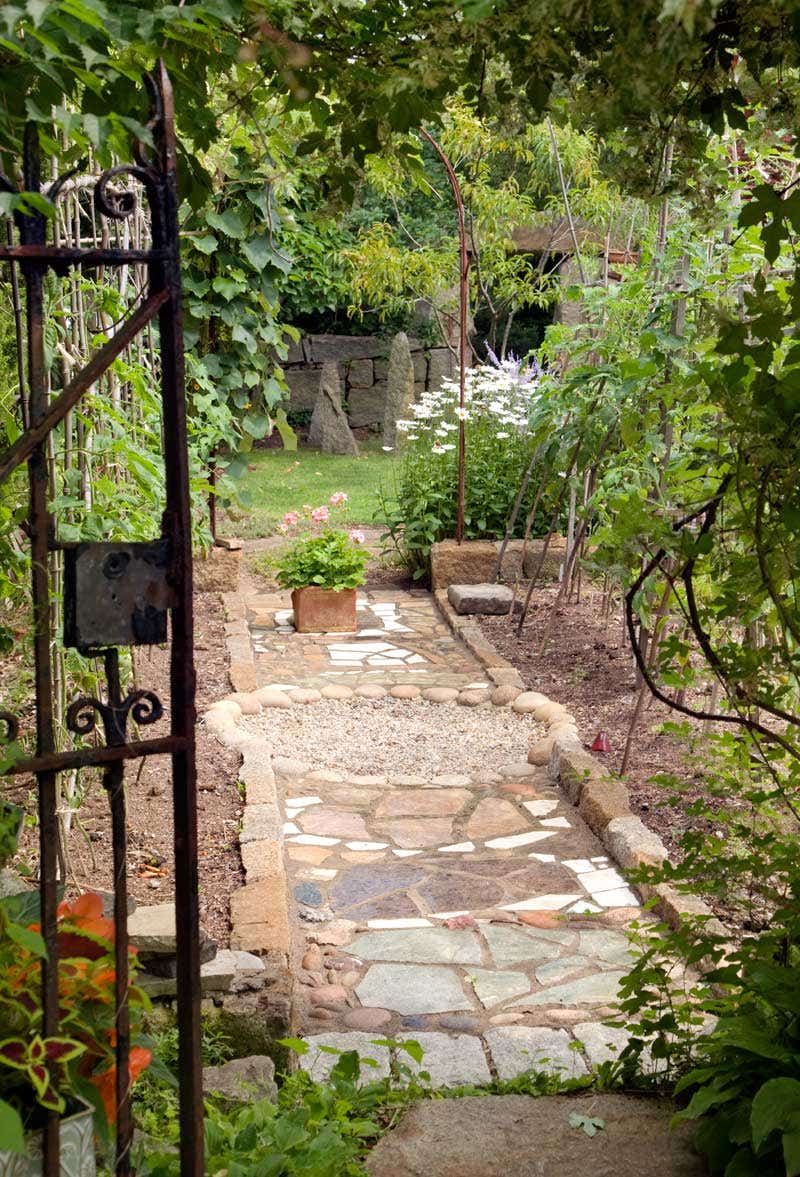
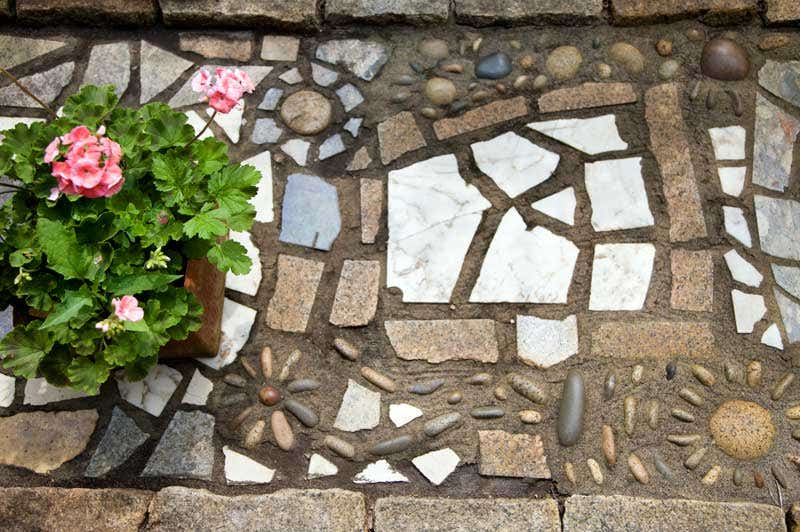
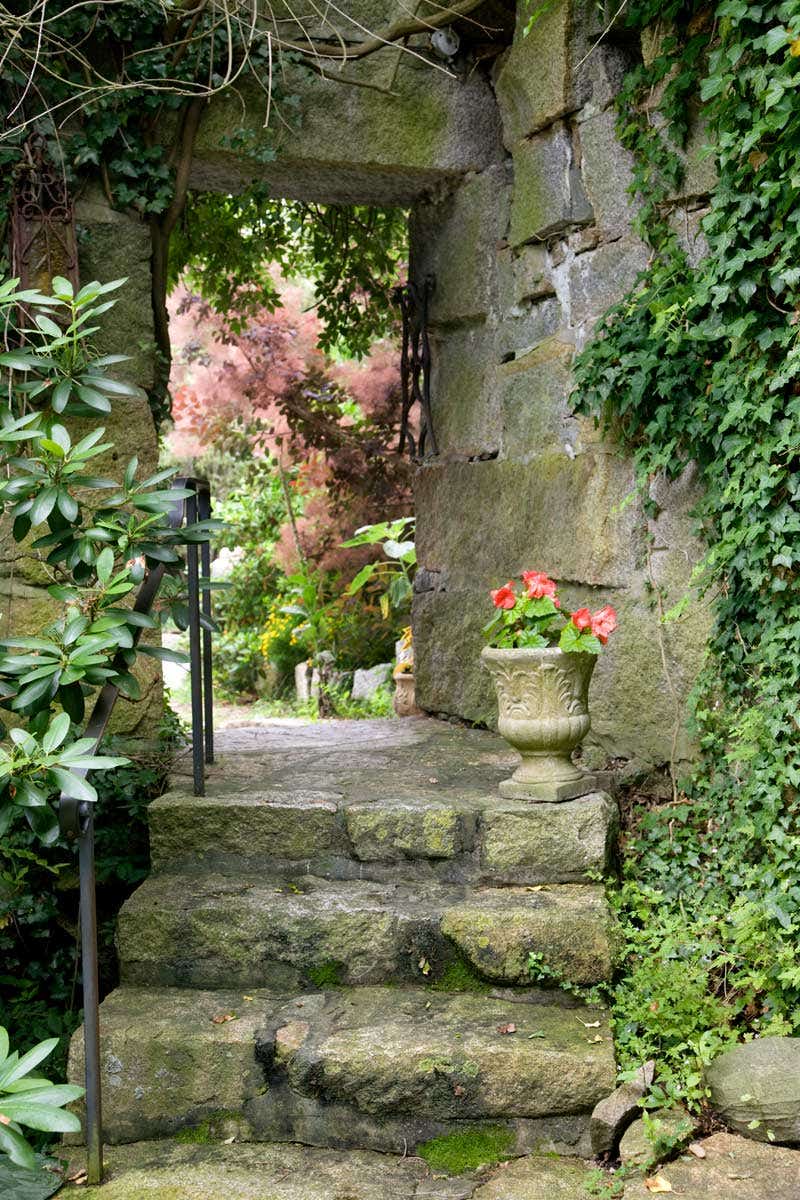
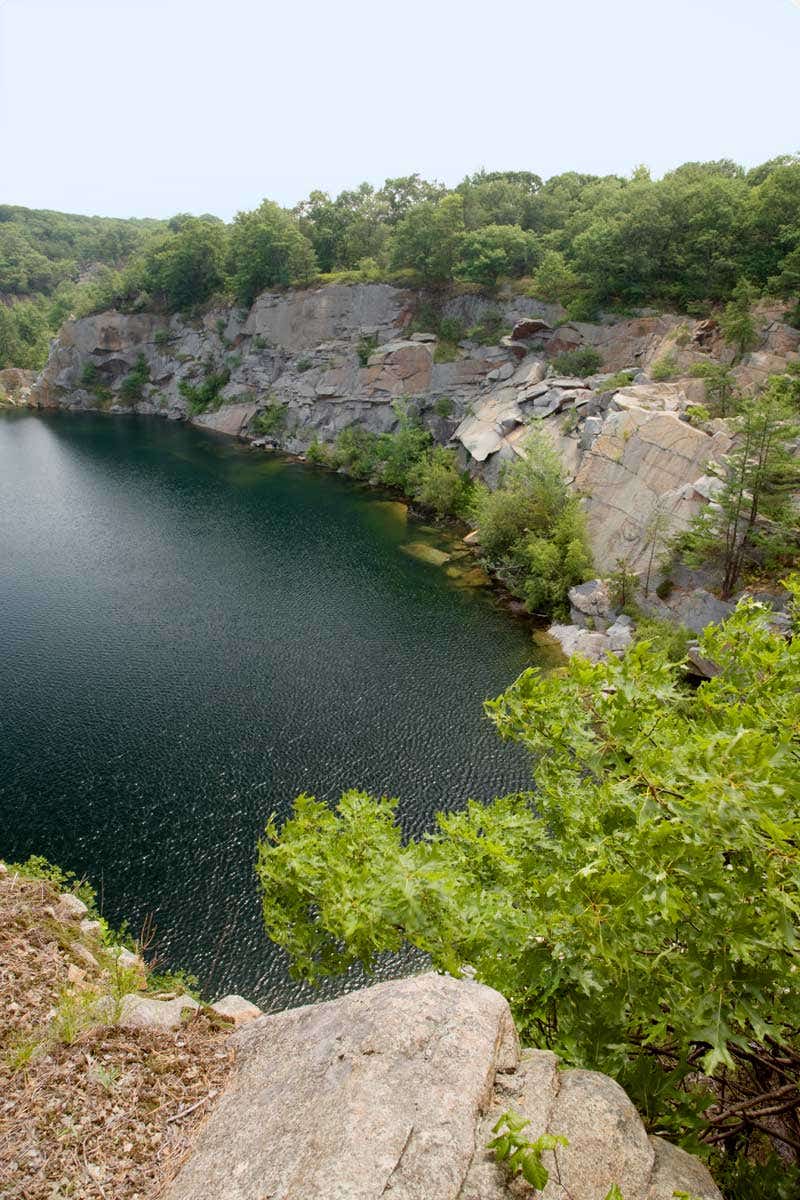
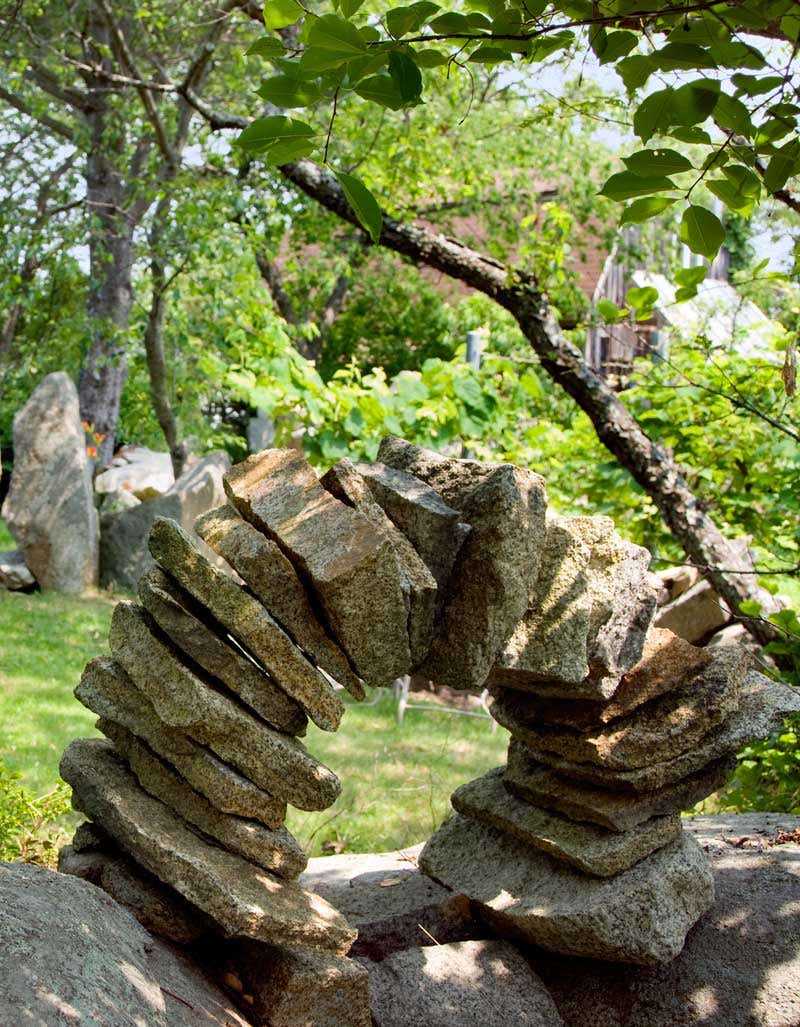
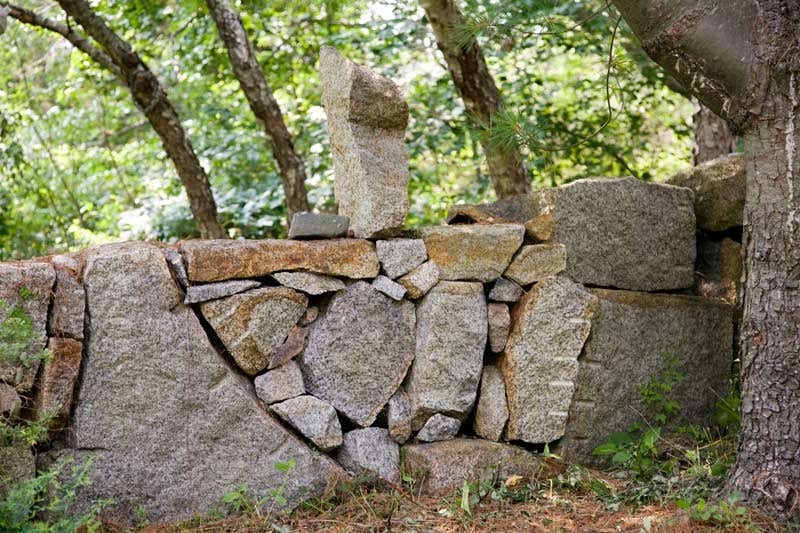
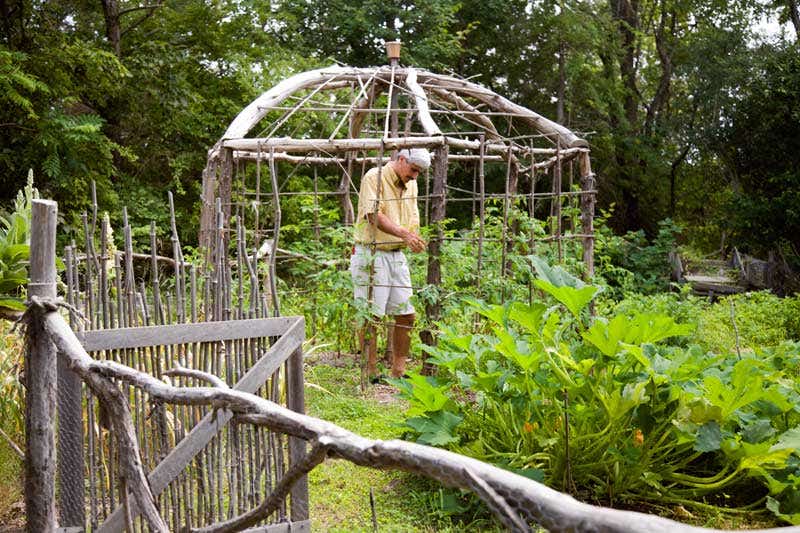
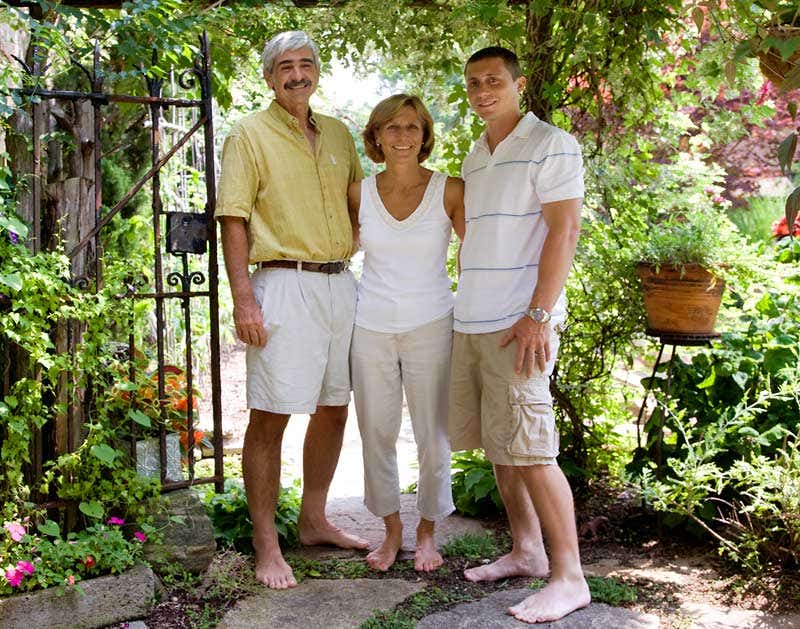
Dave is especially proud of his water features (four so far). In one, water sheets over a large, round ball of granite; another has piled rocks over which water flows and delights the birds—birds that “eat the bugs,” Dave explains. “I like to show clients that they can have water in their gardens without creating a pond.”
“Dave does the stonework and I choose the plants,” Nan says. “I like to say that Dave creates each garden, and I color it in!”
Art & Science of the Moon Gate
Dave Araneo collects rocks—more specifically, unusual specimens that can be used as hardscape, rock sculptures, and garden features. He finds them on his property and through his professional work doing landscape design and construction, site development, walls, patios, and so on. At home, he has erected walls, walkways, and freestanding art, including four water features and two moon gates.
One of the first structures was a large moon gate, erected in 1996. “It’s is one of the oldest technologies around,” he says. “You build a wood form, place the stones to either side, and build up. Then you finish with a keystone and remove the form. There is a wonderful energy to these structures.”
This earlier, larger moon gate features cut stone. More recently, Dave constructed a smaller one using flat pieces of natural, uncut stone. “I used a garbage can for the form, then kicked it out. It has survived storms . . . it may even survive grandchildren!”
Regina Cole is an author and freelance writer for national and regional magazines on all aspects of architecture, interior design, landscape design, and yacht design. Cole specializes in historic architecture and period interiors.
Her work has appeared in a large number of publications, including the daily and Sunday Boston Globe, Interior Design, Old House Journal, Ocean Home, New Old House, Traditional Building, New England Home, Design New England, Maine Boats, Homes and Harbors, Forbes.com, and others.
She has been honored with a number of national writing prizes, including the Association for Garden Communicators Silver Award for a Magazine Article, the National Association of Real Estate Editors Silver Award for Best Residential Real Estate Story in a Daily Newspaper, and the National Association of Real Estate Editors Gold Award for the Best Architecture Story.


